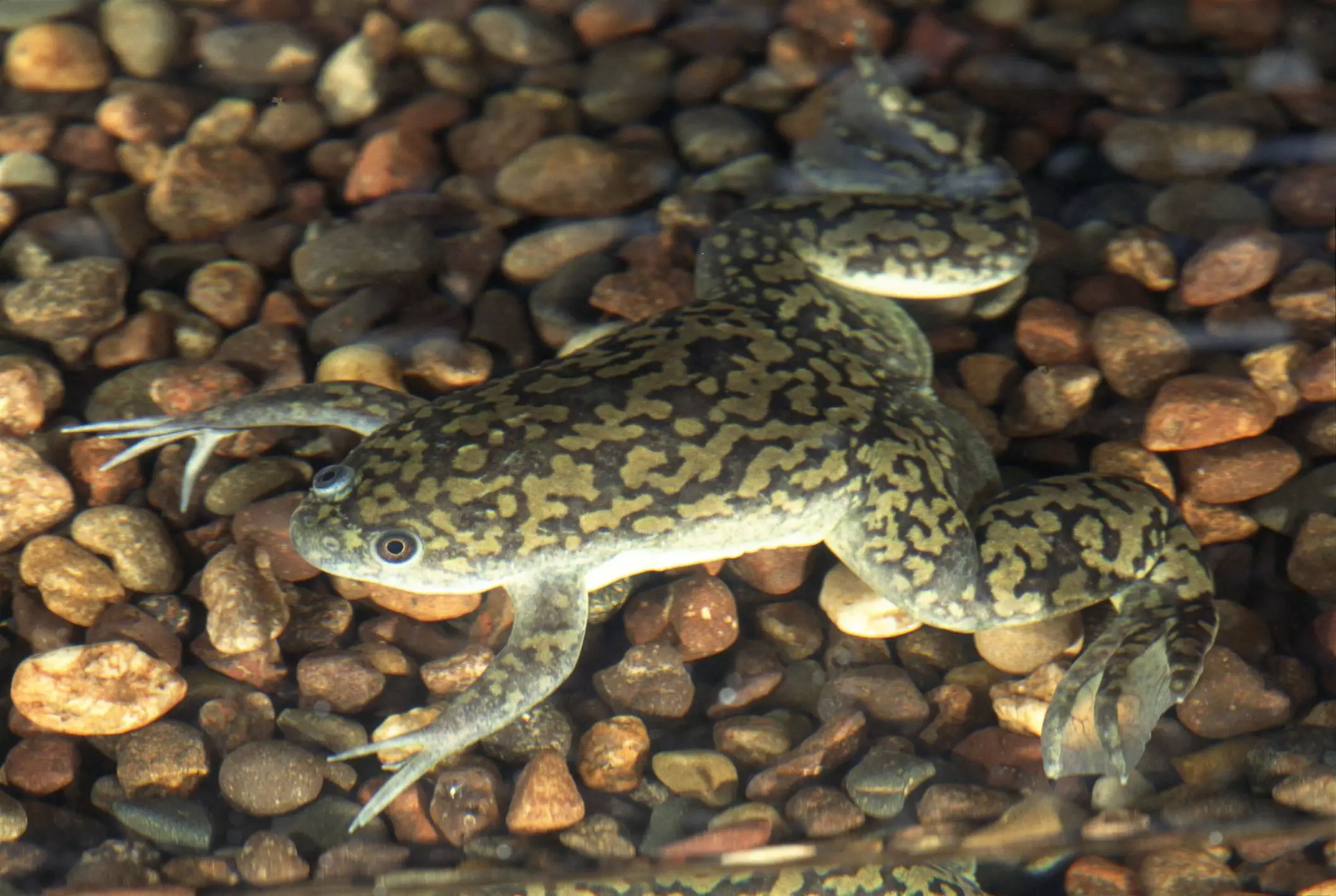African clawed frogs, scientifically known as *Xenopus laevis*, are fascinating aquatic creatures that capture the curiosity of pet enthusiasts worldwide. Their distinctive name originates from the three claws on their hind feet, which serve a practical purpose: tearing apart food in their natural habitats of ponds and rivers throughout Sub-Saharan Africa. Unlike more commonly understood frogs, which often appear in a myriad of colors and patterns, the African clawed frog is more muted in appearance. With their flat snouts and eyes positioned on the top of their heads, they exude a unique charm that differentiates them from their dwarf counterparts. The dwarf frog, with its pointed snout and side-set eyes, is a close relative, yet the African clawed frog commands attention due to its size and resilience.
Growing between 2 to 5 inches, these aquatic companions are not only visually appealing but also boast a remarkable lifespan of around 15 years. This longevity, paired with their hardy nature, makes them an attractive option for novice frog keepers. Yet, despite their seemingly straightforward care requirements, owning an African clawed frog is not without its challenges.
A Unique Pet Ownership Experience
Many frog enthusiasts are drawn to African clawed frogs for their low-maintenance needs, but this simplicity can be deceptive. While they do not require complex tank setups, a nuanced understanding of their needs is crucial for their well-being. Unlike other pets, these amphibians thrive in minimalistic environments that mimic their natural habitats. A 10-gallon aquarium can serve as a sufficient home for one frog, with the must-have caveat of secure tops—these curious creatures are known escape artists and can leap surprisingly high.
Even though African clawed frogs are fascinating to observe—gliding gracefully through their aquatic homes—they should not be handled frequently. Their skin, which serves as a barrier to their aquatic environment, is delicate and can dry out quickly. This makes the prospect of interaction more complicated than with other common pets. However, some frogs can be trained to accept food directly from their caretakers, providing a delightful way to bond that allows for interaction without direct handling.
The Nutritional Needs of African Clawed Frogs
Feeding these frogs is a balancing act that speaks to the heart of responsible pet ownership. African clawed frogs primarily consume floating reptile or amphibian sticks designed for their dietary needs, but a varied diet keeps them healthy and engaged. Supplementing their diet with earthworms, bloodworms, and brine shrimp not only adds nutritional diversity but also mimics their natural foraging behavior. However, owners must remain vigilant about overfeeding, which can lead to obesity—a common concern among captive frogs.
It’s also critical to monitor their health consistently. Signs of illness in African clawed frogs often manifest through visual cues like cloudiness in their eyes or abnormal skin conditions. Given their propensity for bacterial and fungal infections, regular tank maintenance is pivotal to ensure great water quality and, subsequently, the health of the frogs. An aquarium thermometer is an essential tool for monitoring water temperature, while a dechlorination process for tap water is necessary to avoid harmful effects on these sensitive creatures.
Creating an Optimal Environment
Designing a suitable habitat for African clawed frogs is primarily about simulating their natural environment in a way that soothes and stimulates them. The substrate chosen needs careful consideration; gravel can work, but opting for larger stones will prevent accidental ingestion. Additionally, live plants can be a charming addition but might require compromises, as these frogs sometimes disrupt plants in their playful exploration.
The discussion around filtration systems is equally enigmatic. While many aquatic pets thrive with consistent filtration, African clawed frogs have a sensory system sensitive to vibrations, causing some experts to caution against traditional filters that may stress them. Gentle filter options provide water cleanliness without overwhelming the frogs, yet may not completely eliminate the need for regular water changes, which should be performed at least weekly without filtration.
Choosing the Right Frog for Your Home
When considering the introduction of an African clawed frog into your home, it is paramount to source your pet from a reputable breeder or rescue organization. Health and origin history are vital to ensure you begin your experience with a healthy, lively frog. Price expectations typically range from $20 to $30, which is a small investment for an animal that could delight you for years.
Potential owners should look for signs of vitality in prospective pets—clear eyes, smooth skin, and active behavior are all indicators of health. Lethargic frogs that show disinterest in food might be symptomatic of larger issues, which is a red flag that should not be ignored.
While African clawed frogs present an appealing option for first-time amphibian keepers, they come with their own set of responsibilities and challenges. Their unique requirements and behaviors invite an intriguing exploration into the world of exotic pet care, ensuring that the journey will be rewarding for those willing to learn.

